It amazes me how many different regional cuisines there are in Mexico, but there’s one that, except for a single dish, rarely makes it out of its home state. I’m talking about Veracruz, the state with over 500 kilometers of coastline and that one famous dish, pescado a la veracruzana.
In San Miguel de Allende though, with the opening of Pa’sumecha a couple of months ago, things have changed. The restaurant’s focus is la cocina de Veracruz and I think it’s the very first restaurant in this town to show off the cuisine.
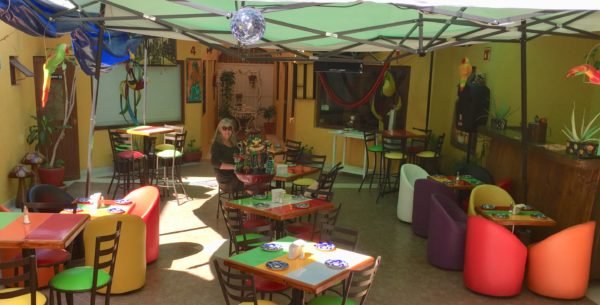
Pa’sumecha is in a very convenient location with a very attractive and colorful courtyard. The art is a little garish, there are a few too many decorations, the background music is a titch too foreground, and there’s an annoying television that fights for attention, but if you can get over those distractions, there’s a cool but comfortable feeling to the restaurant.
Now before I tell you about what Pa’sumecha serves, I should tell you what Pa’sumecha means for, a few days ago, I had no idea (and neither did Google Translate). The best answers I got were from my favorite translators, cab drivers. One told me it was like saying “incredible”. The other compared it to the English “you’ve got to be kidding”. And there are at least three things served at the restaurant that might just have you saying “pa’sumecha”.
But first I’ll tell you about the expected. With all of that shoreline, fish shows up a lot on Pa’sumecha’s menu. All of the fish is mojarra which, in Mexico, is just another name for tilapia and all of it is farmed and frozen. That is made up for though with some imaginative sauces that include chile limón, mojo de ajo, techogobi (chiles and currant tomatoes), escabeche, and the classic, a la veracruzana.
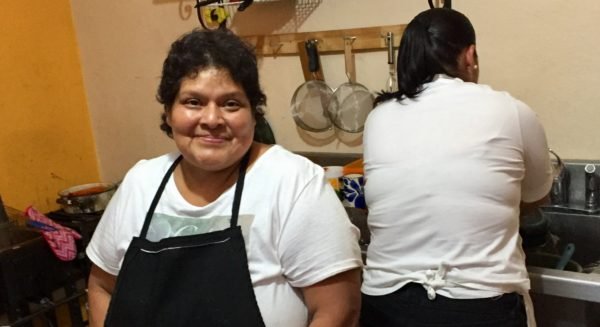
On to the unexpected dishes; the first one is called mole artesanal on the menu. Now when I think of Mexican mole in terms of geography, top states of mind are Puebla with mole poblana and Oaxaca with mole oaxaqueña. If, though, like Pa’sumecha Chef Julia Bautista Navarro, I was from that Mexico state that snakes its way along the Gulf of Mexico, I might tell you that mole veracruzana “should be just as famous”.

“The difference is mainly in the chiles we use”, Julia told me. “Mine has pasillas, mulatos, anchos and cascabels. There are 22 ingredients in all including bananas (that Julia was busy mashing), something that you probably won’t find in other moles.”
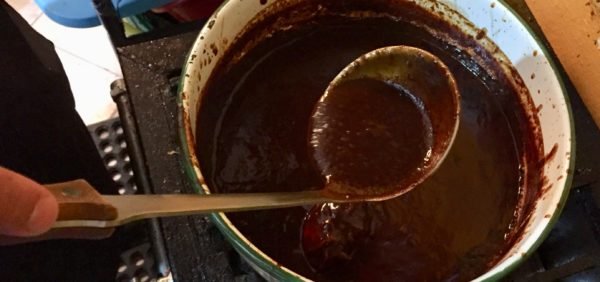
The difference in look is a little darker in color, probably from those pasillas and mulatos. The difference in taste is less sweet, a little more savory. And I really like that.
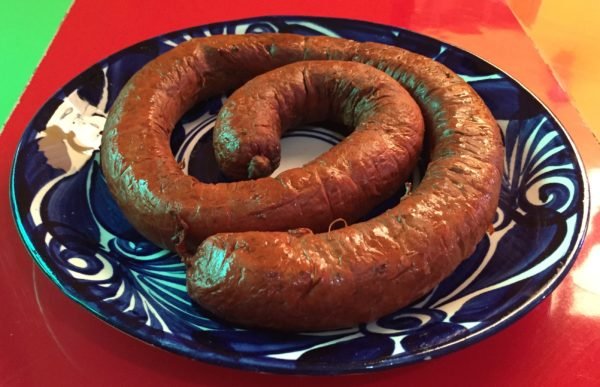
The second unexpected but extraordinary dish is a smoked sausage. Now when I think of smoked sausages, I think of Eastern Europe, not Eastern Mexico, but Pa’sumecha has a world class sausage. The first reason is the spicing with generous amounts of garlic and guajillo chiles as well as hints of ancho chiles and oregano. The second is in the smoking. Chef Julia told me, “the longaniza spends hours over an open fire made of mesquite with guava leaves.”
“And can you get this locally?”, I inquired, getting ready to make plans to start serving it at home.
“No”, said Julia, “it must come from Veracruz…it comes on the bus.”
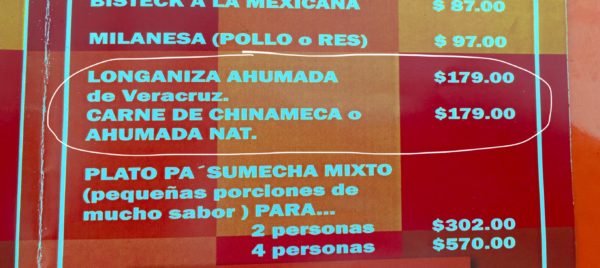
That third unexpectedly good dish at Pa’sumecha also arrives by bus, this time from a town in the southeast of Veracruz that gives it its name. Carne de Chinameca is a somewhat legendary meat, supposedly sampled by Hernán Cortés following his landing at Veracruz but unknown to me before I landed at Pa’sumecha.
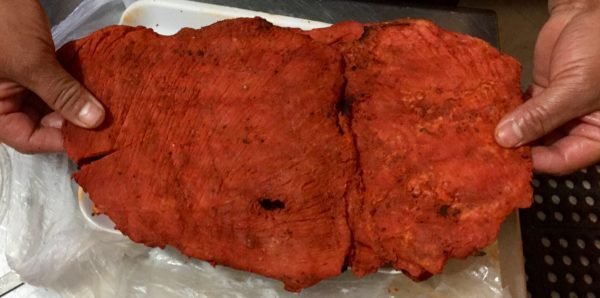
Liberal quantities of the spice achiote, which comes from the seeds of a locally grown bush, are spread over thin slices of pork giving it a deep red color and a sweet and earthy flavor. Like the longaniza, it too spends a couple of hours over a wood fire. Like the longaniza, the only friend it needs is a tortilla to wrap around it.
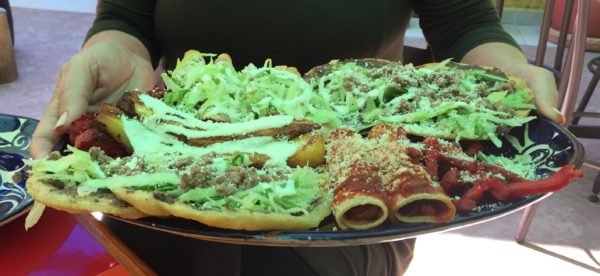
If I’ve done my job right, by now you should be wanting to try all of those three dishes that were new to me, especially if they’re also new to you, and there is a way. On the menu, there is a plato Pa’sumecha mixto, at a very reasonable price of $302 for two, that includes sample tastes of all three, but be warned. If you’re like me, you’ll be hungry for more and back to individually order all of them very soon.
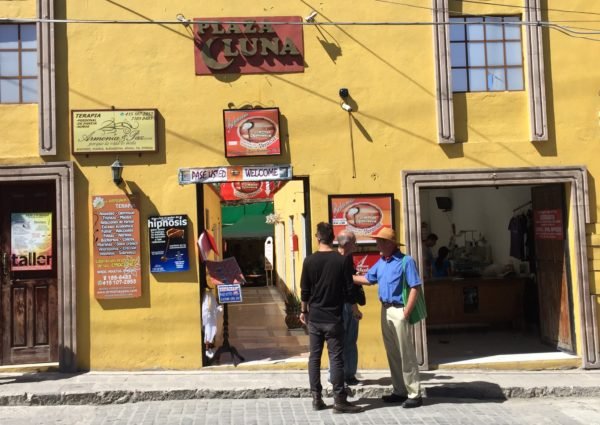
Pa’sumecha is located at Ancha de San Antonio #39 (and be warned that the numbers on the ancha make little sense) in San Miguel de Allende, Mexico. The restaurant is open from Wednesday to Monday from 10:00 am to 7:00 pm and closed on Tuesdays.

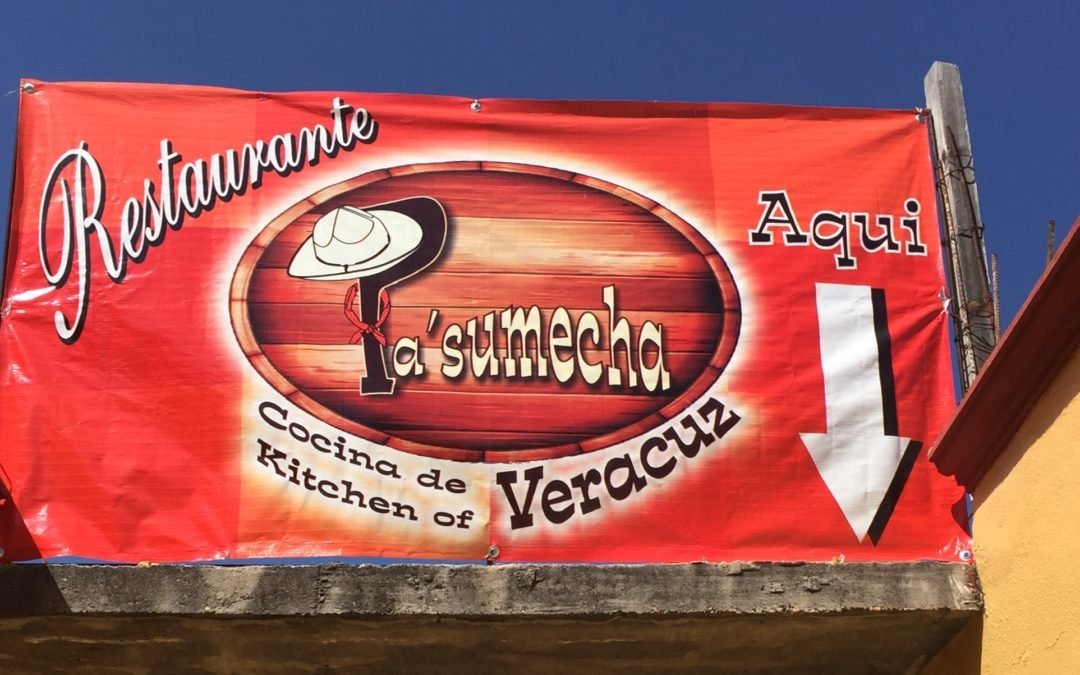
looks awesome! just back from my first trip to SMA. I loved it. stayed at a wonderful B and B.
La Casa de la Cuesta. The owners Bill and Heidi are great. If you have not seen his mask museum you should go visit. Heidi also is a retired art teacher and gives lectures on wonderful textiles from surrounding areas.
Don’t forgt La Casa del Diesma on Jesus, a longtime SMA restaurant that serves Veracruz cuisine. And has the prettiest courtyard in town.
Thank you for all these off the beaten path and not ridiculously trendy and expensive places to eat.
My curiosity always goes to places like this but I don’t have the chutzpah to try.
Wonderful! Thank you!
Does their sign really say “Veracuz”???
Also, what is the source of their Tilapia? So much of the world’s farmed (and toxic) tilapia originates from China which is a non-starter for any restaurant that serves it.
It really does say Veracuz! The tilapia is probably local; Mexico is now very big in tilapia farming.
I love platters like that! It’s a wonderful way to be introduced to the dishes of a region. We miss SMA.